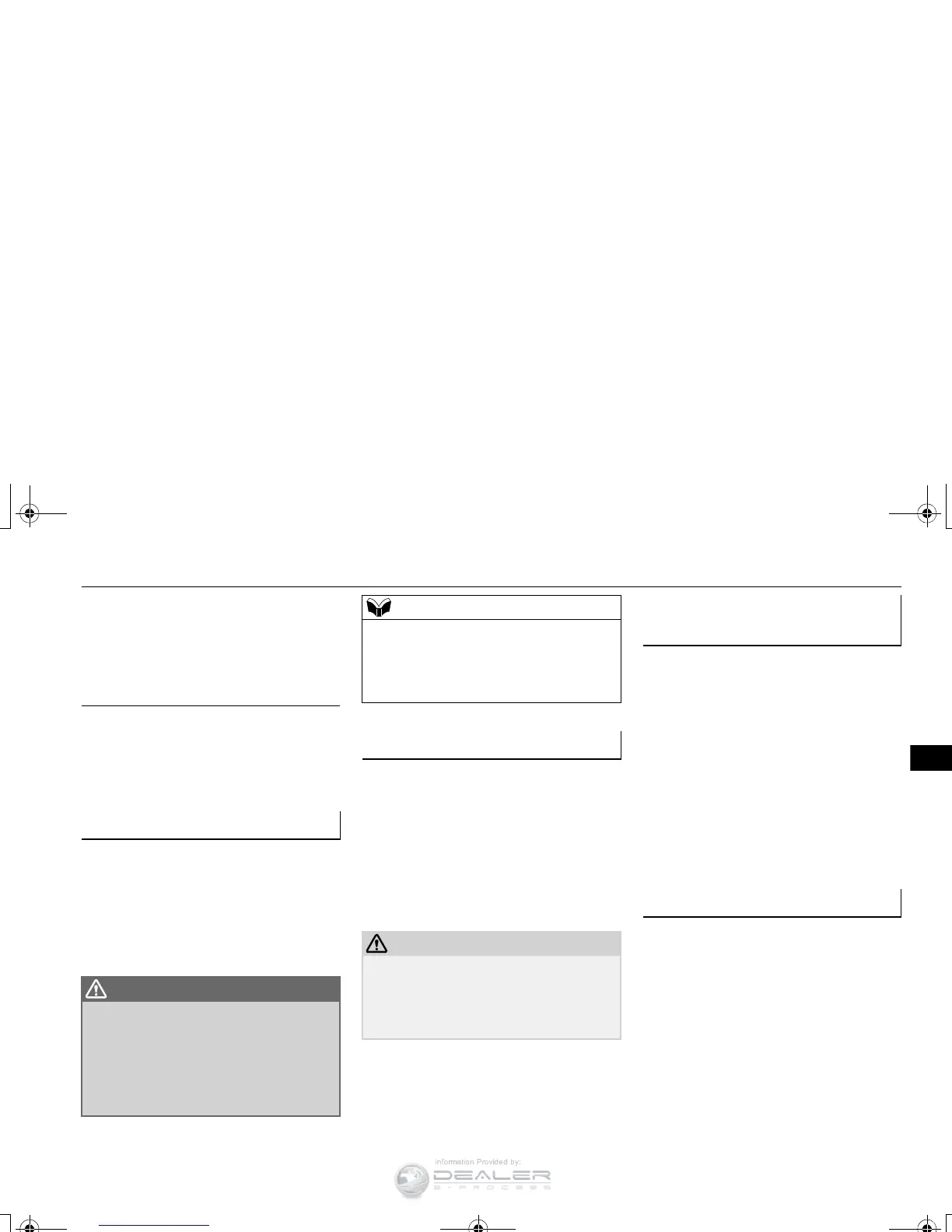Tongue loads can be adjusted by proper dis-
tribution of the load in the trailer. This can be
checked by separately weighing the loaded
trailer and then the tongue.
The GAWRs are printed on the certification
label which is riveted on the door sill on the
driver’s side.
Refer to “Vehicle labeling” on page 11-2.
Choose a proper hitch and ball, and make
sure it is installed at a height that is compati-
ble with the trailer.
Use a good equalizing hitch which uniformly
distributes the trailer tongue load throughout
the frame.
A safety chain must always be used between
the towing vehicle and the trailer. Leave suf-
ficient slack in the chain for turns. The chain
should cross under the trailer tongue to pre-
vent the tongue from dropping to the ground
in case it becomes damaged or separated.
For correct safety chain procedures, consult
your authorized Mitsubishi Motors dealer.
Your vehicle will need service more often
when you’re towing a trailer. Refer to “WAR-
RANTY AND MAINTENANCE MAN-
UAL”. Especially important in trailer
operation are manual transaxle oil, automatic
transaxle fluid, engine oil, rear axle oil, belt,
cooling system and brake system. Each of
these is covered in this manual.
For details, please refer to the “Vehicle care
and maintenance” section.
Check periodically to see that all hitch nuts
and bolts are tight.
Mitsubishi Motors recommends that any
trailer having a total weight of 1,250 lbs (567
kg) or more (2400 models), 1,400 lbs (635
kg) or more (3000 models) be equipped with
its own electric or surge-type brakes.
If you choose electric brakes, be sure they are
electrically actuated. Do not attempt to tap
into your vehicle’s hydraulic system. No mat-
ter how successful it may seem, any attempt
to attach trailer brakes to your vehicle’s
hydraulic system will lower braking effec-
tiveness and create a potential hazard.
Gross axle weight rating (GAWR)
Trailer hitches

